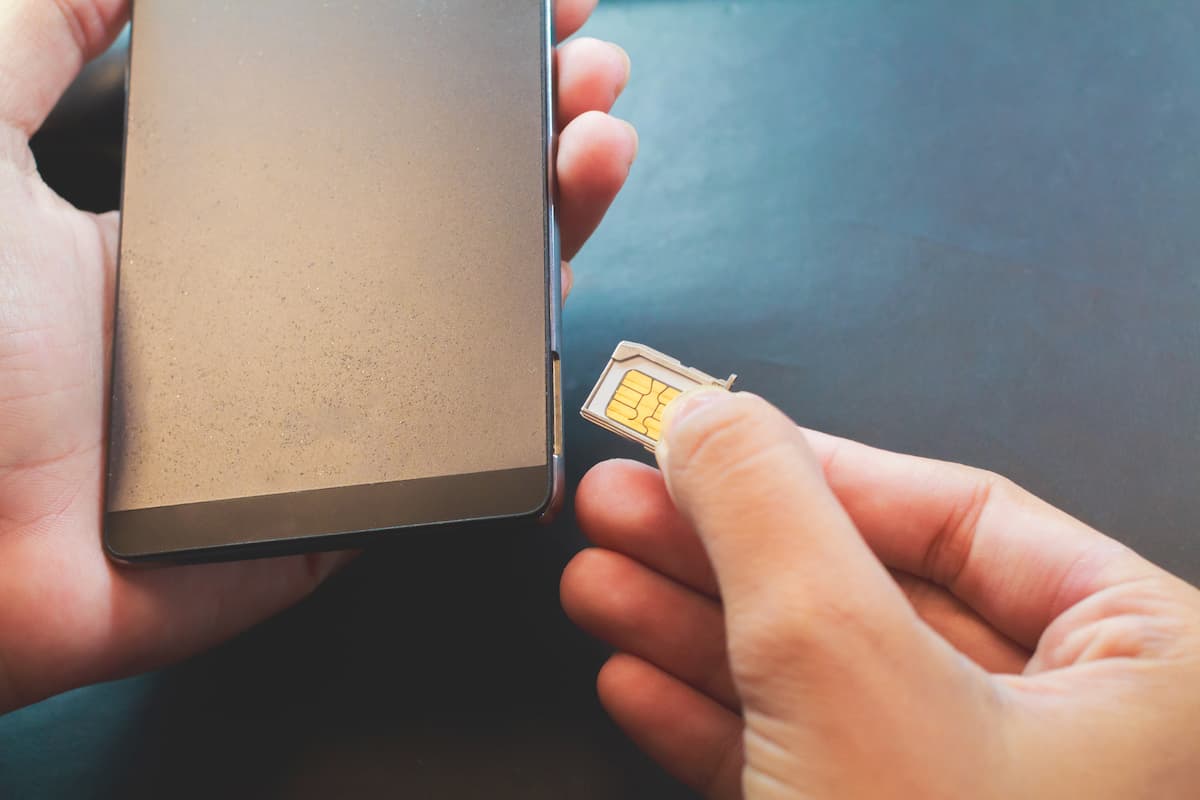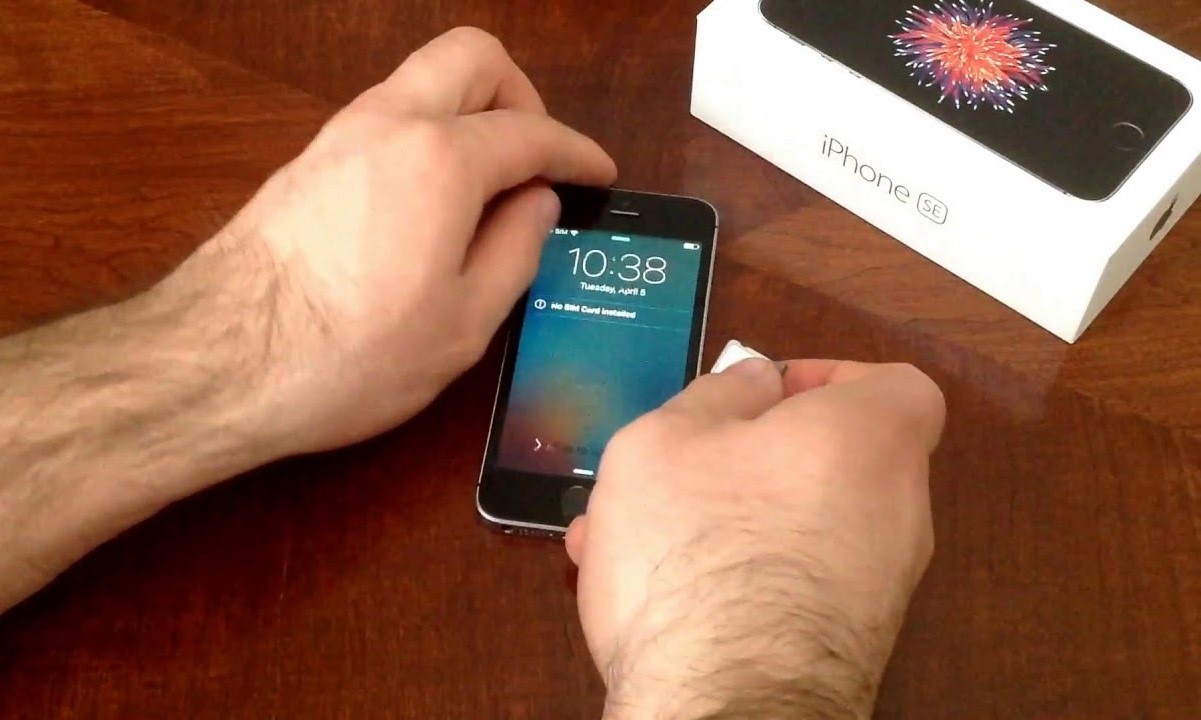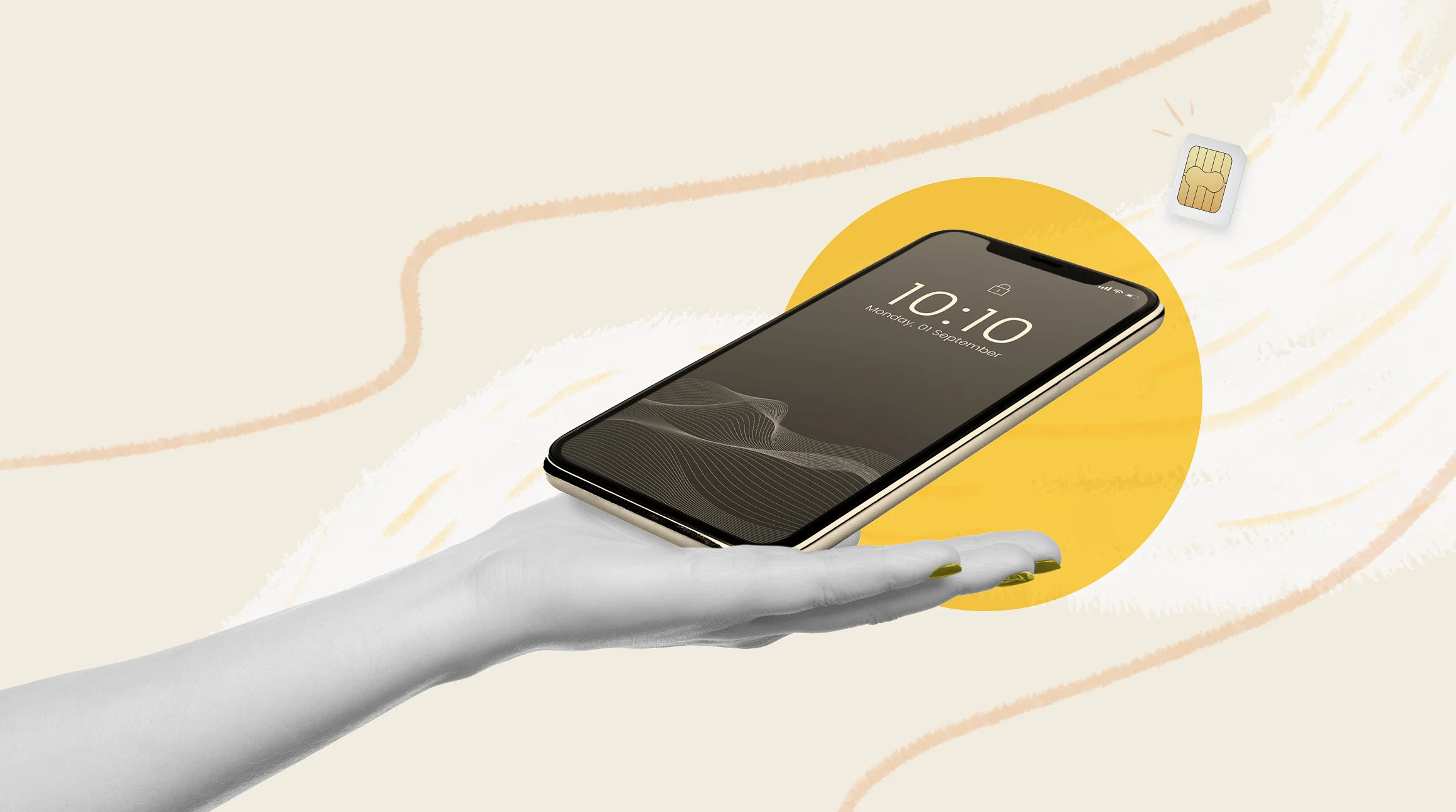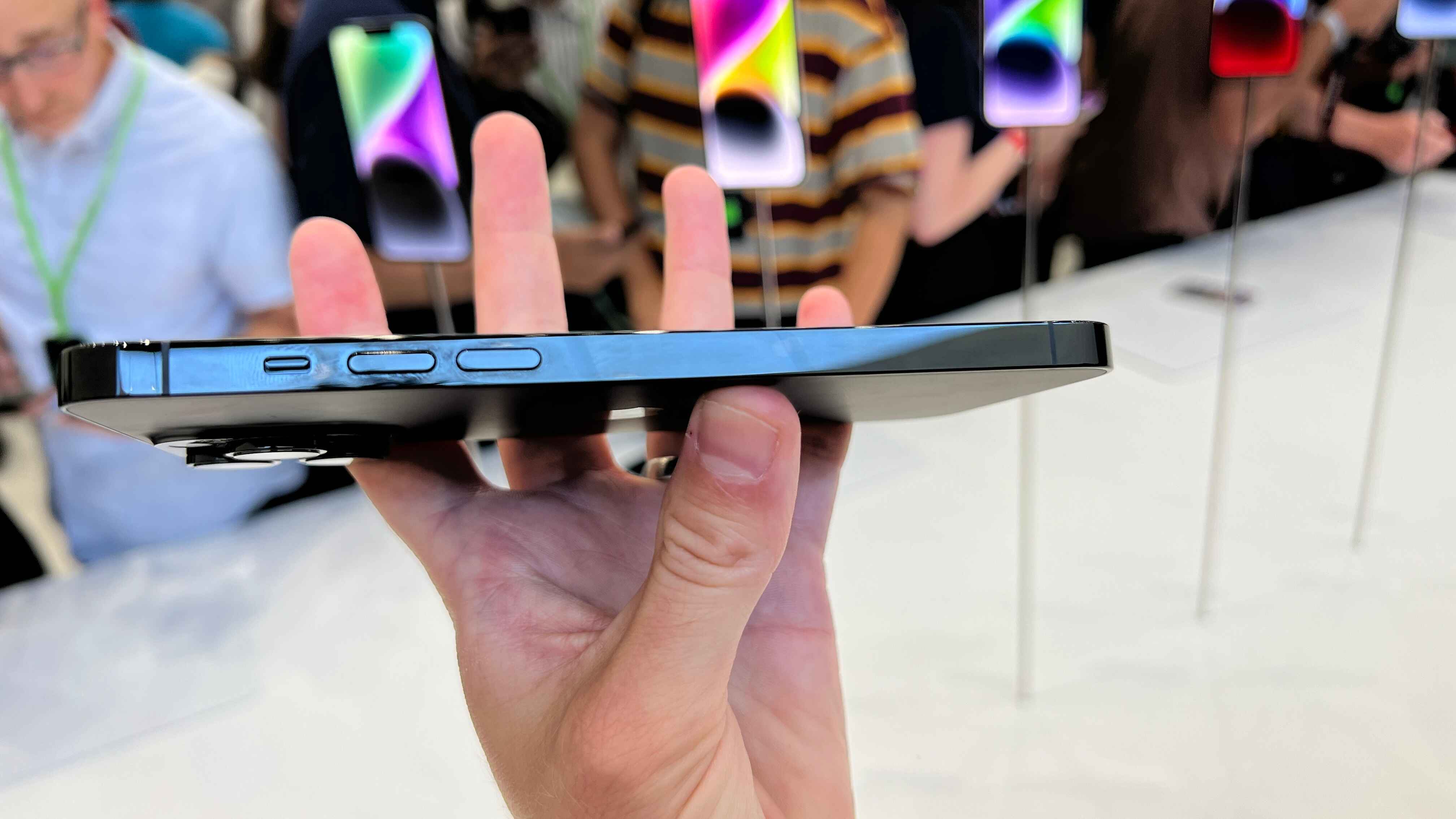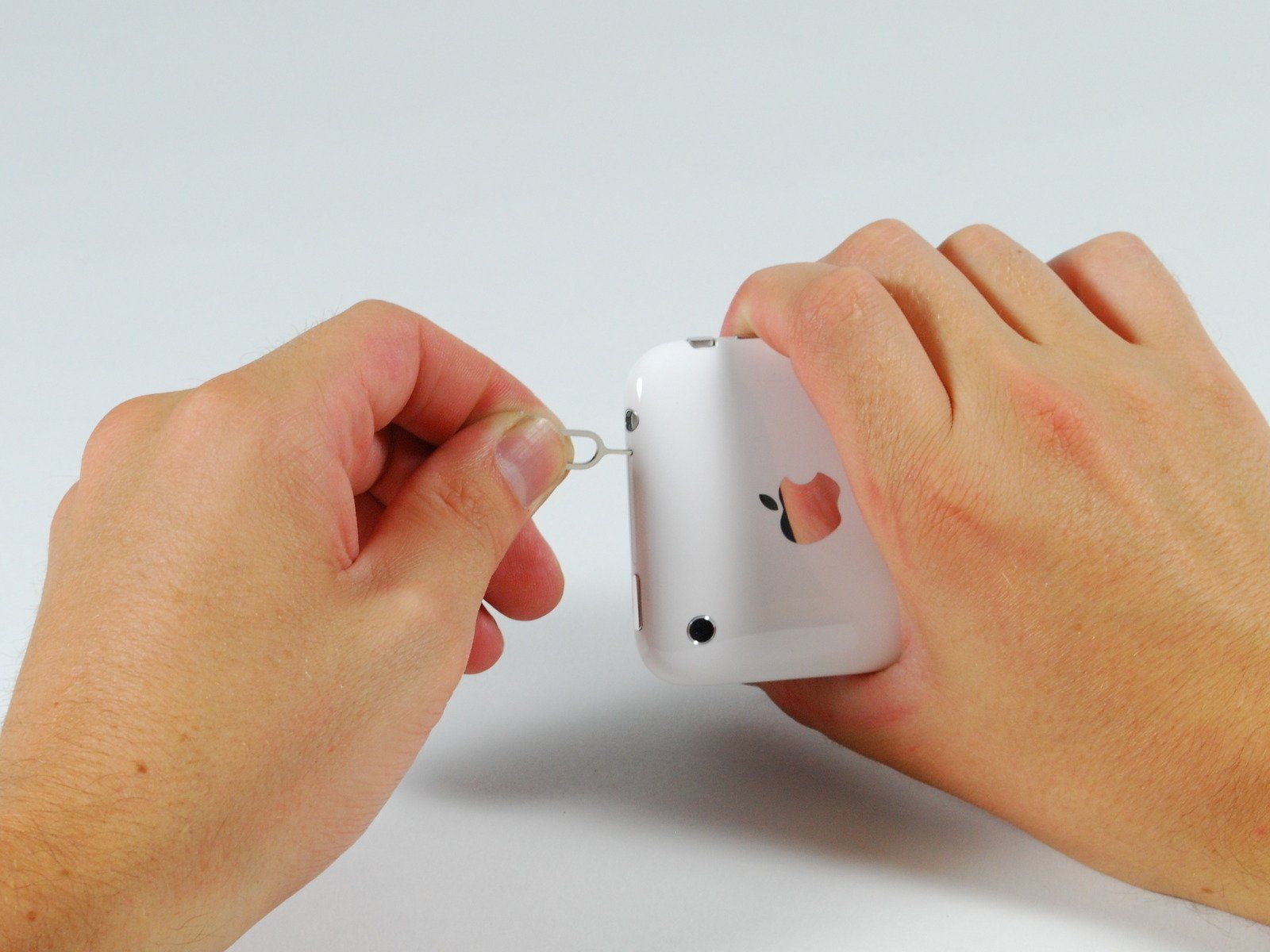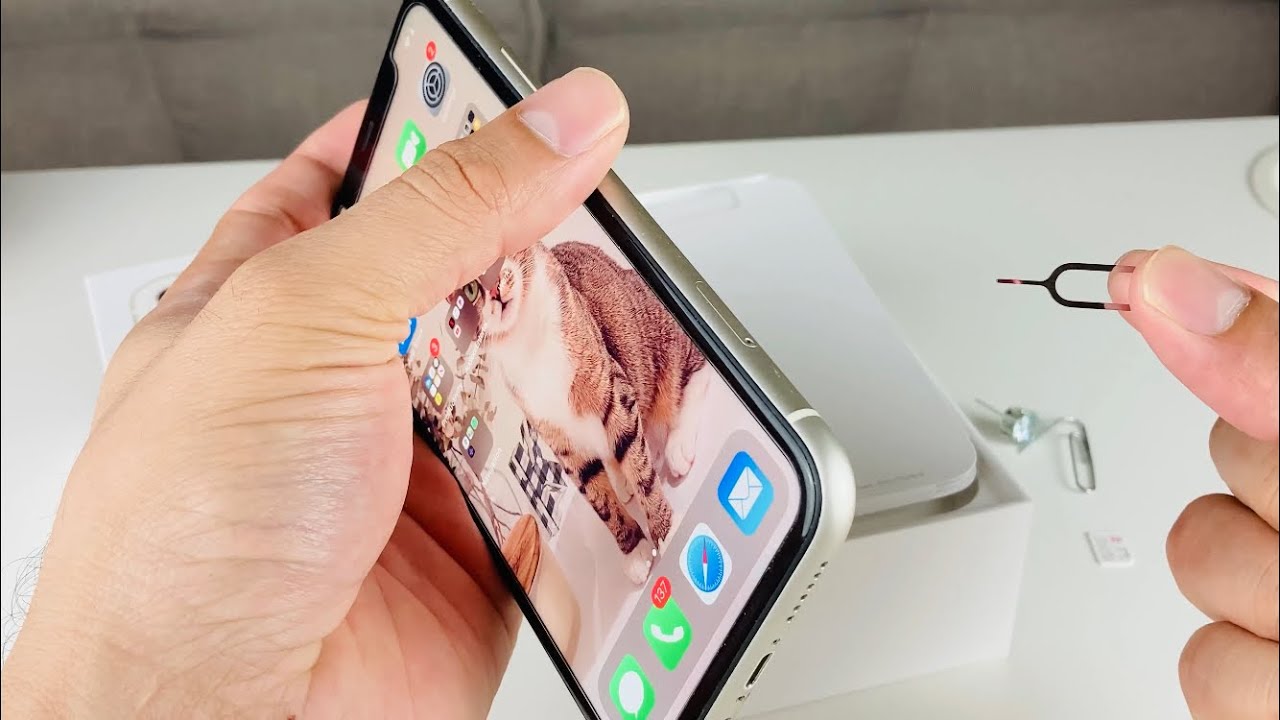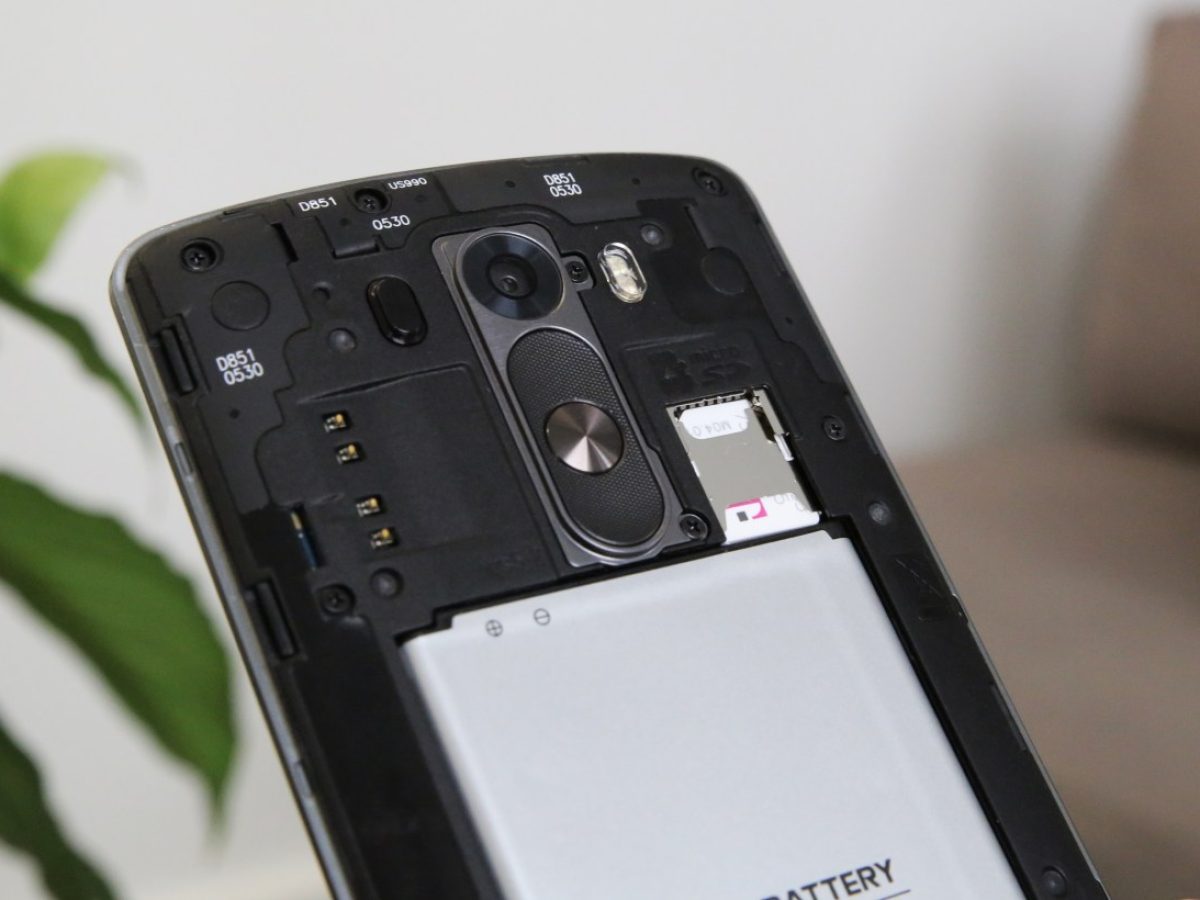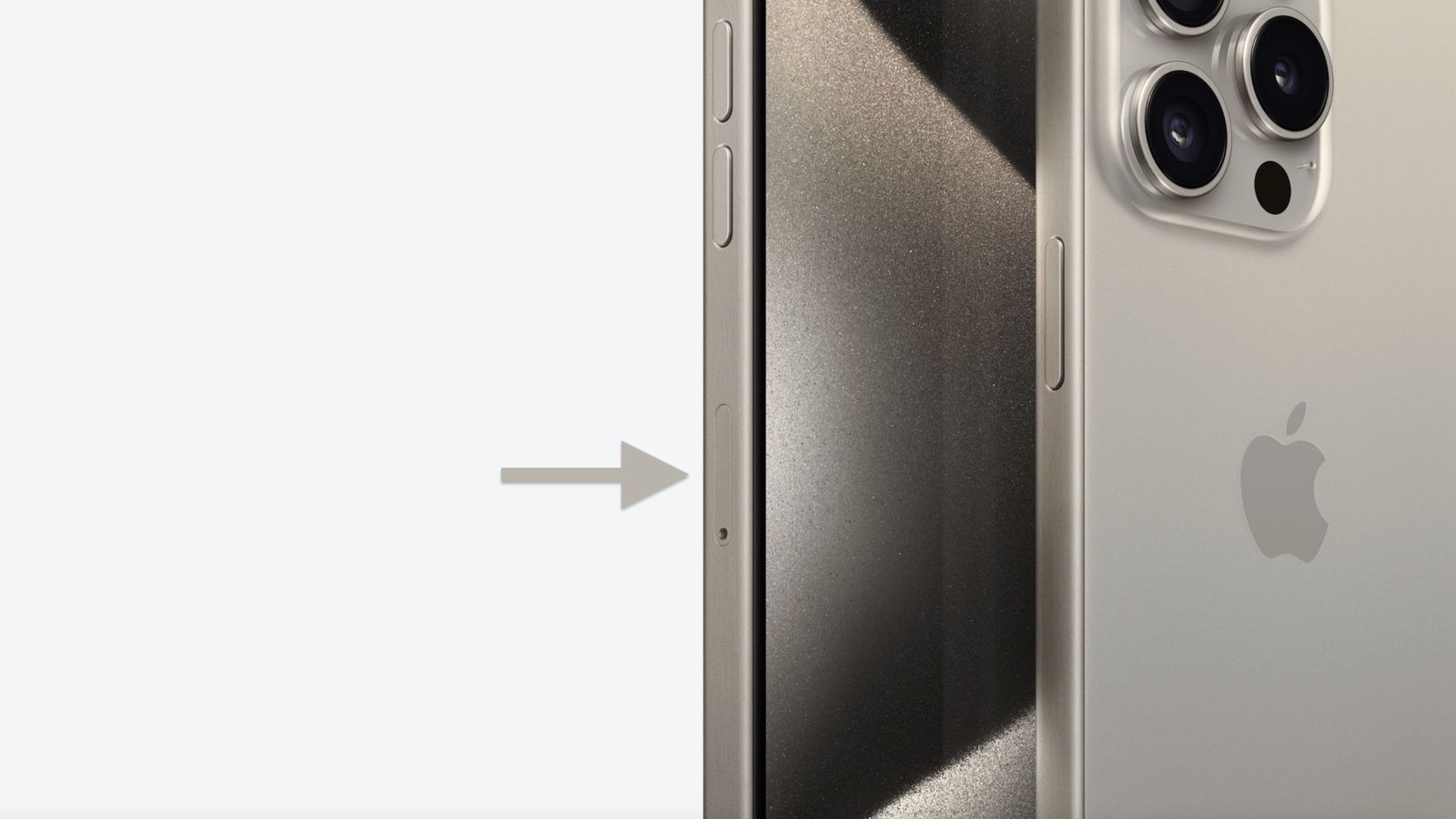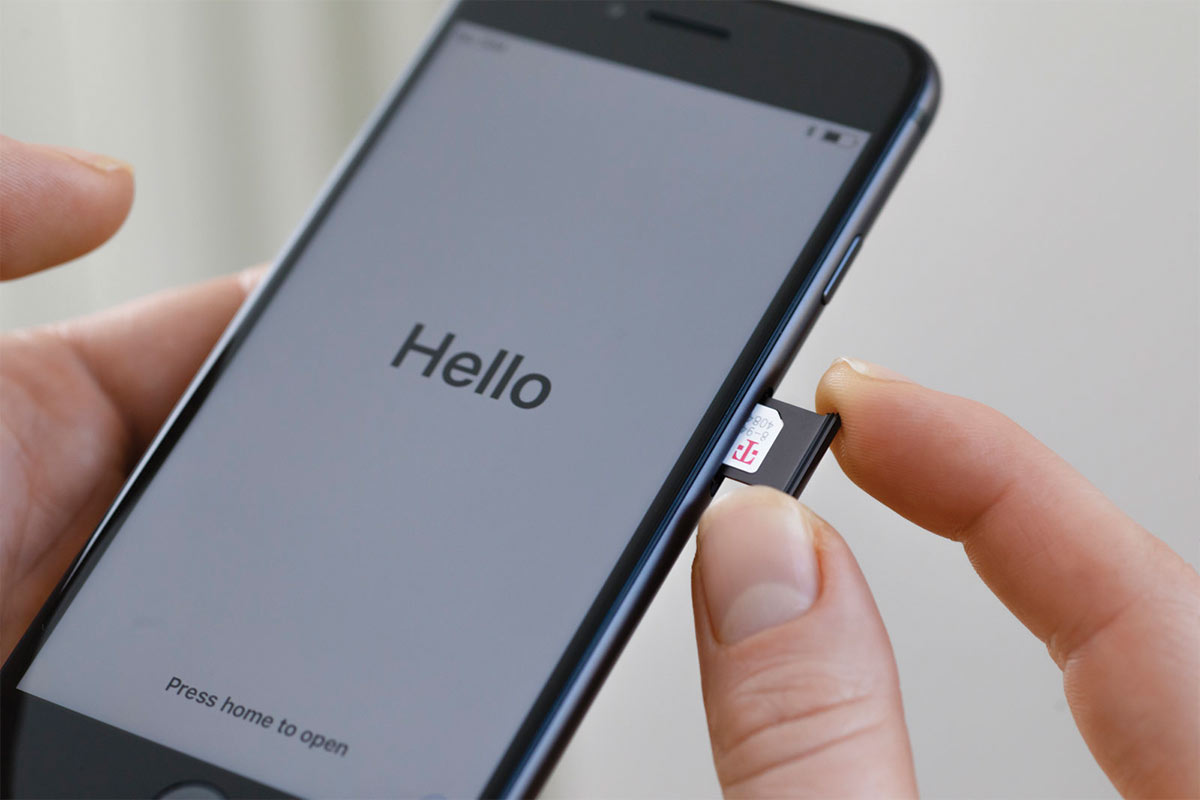What is a SIM Card?
A SIM card, which stands for Subscriber Identity Module, is a small, removable card that is essential for connecting to a mobile network. It serves as a unique identifier for the user and the mobile device, allowing the network to recognize and authenticate the user's identity. The SIM card securely stores the subscriber's identity, phone number, network authorization data, contacts, and text messages.
The SIM card plays a vital role in enabling voice calls, text messaging, and mobile data usage. It holds the key to accessing the mobile network and is crucial for the functioning of a mobile device. Without a SIM card, a mobile phone would not be able to connect to a cellular network and would be limited to functions that do not require network connectivity, such as using Wi-Fi for internet access.
In addition to its primary function of enabling network connectivity, the SIM card also contains security features to protect the user's data and prevent unauthorized access to the mobile network. It uses encryption and authentication mechanisms to ensure the privacy and integrity of communications over the network.
SIM cards come in various sizes, including standard SIM, micro SIM, and nano SIM, to accommodate different types of mobile devices. The evolution of SIM card technology has led to the development of embedded SIMs (eSIMs), which are integrated directly into the device's hardware and can be reprogrammed remotely.
Overall, the SIM card is the key that unlocks the full potential of a mobile device, enabling users to stay connected, communicate, and access mobile services wherever they go. Understanding the significance of the SIM card is essential for anyone using a mobile phone or other cellular-enabled devices.
Types of SIM Cards
SIM cards come in various types and sizes, each designed to fit specific mobile devices and accommodate technological advancements. Understanding the different types of SIM cards is crucial for ensuring compatibility and seamless connectivity. Here are the main types of SIM cards:
Standard SIM Card
The standard SIM card, also known as a mini SIM, was the first form factor widely used in mobile phones. It measures about 25mm x 15mm and is characterized by its larger size compared to more modern variants. While it is less common in newer devices, some older mobile phones and certain IoT devices still utilize standard SIM cards.
Micro SIM Card
The micro SIM card was introduced to address the need for smaller SIM cards in increasingly compact mobile devices. It measures approximately 15mm x 12mm and features a reduced form factor compared to the standard SIM card. Many smartphones and tablets released in the mid-2000s to early 2010s adopted the micro SIM format.
Nano SIM Card
The nano SIM card represents the latest standard in SIM card technology, featuring a significant size reduction compared to its predecessors. With dimensions of about 12.3mm x 8.8mm, the nano SIM is notably smaller, allowing mobile device manufacturers to design slimmer and more lightweight products. Most modern smartphones and tablets, including the latest iPhone and Android models, utilize nano SIM cards.
Embedded SIM (eSIM)
The embedded SIM, or eSIM, represents a revolutionary advancement in SIM card technology. Unlike traditional SIM cards, the eSIM is embedded directly into the device's hardware and does not require physical removal or insertion. Instead, it can be reprogrammed remotely to switch between mobile networks. This technology is particularly prevalent in newer smartphones, smartwatches, and other IoT devices, offering greater flexibility and convenience for users.
IoT SIM Cards
In addition to the standard consumer SIM cards, there are specialized SIM cards designed for Internet of Things (IoT) applications. These SIM cards are tailored to the unique requirements of IoT devices, such as sensors, trackers, and industrial equipment, providing connectivity for machine-to-machine communication and IoT deployments.
Understanding the distinctions between these SIM card types is essential when acquiring a new mobile device or considering a network provider switch. By selecting the appropriate SIM card type for your device, you can ensure seamless compatibility and optimal performance, enabling you to fully leverage the capabilities of your mobile technology.
How to Insert and Remove a SIM Card
Inserting and removing a SIM card is a straightforward process, but it requires careful handling to prevent damage to the card or the mobile device. Whether you are setting up a new device or switching to a new SIM card, following the correct procedure is essential. Here's a comprehensive guide on how to insert and remove a SIM card from your mobile device:
Inserting a SIM Card
-
Locate the SIM Card Slot: Depending on your device model, the SIM card slot may be located on the side, top, or back of the device. Some smartphones have a SIM card tray that requires a SIM eject tool or a paperclip to open.
-
Power Off the Device: Before inserting or removing a SIM card, it's advisable to power off the mobile device to prevent any potential damage to the SIM card or the device's SIM card slot.
-
Open the SIM Card Slot: If your device has a SIM card tray, use a SIM eject tool or a paperclip to gently push into the small pinhole next to the SIM card slot. The tray will pop out, allowing you to access the SIM card slot.
-
Insert the SIM Card: Carefully place the SIM card into the designated slot, ensuring that the gold contacts on the SIM card align with the contacts in the slot. For devices with a SIM card tray, position the SIM card on the tray and gently slide it back into the device until it clicks into place.
-
Close the SIM Card Slot: If you used a SIM card tray, gently push it back into the device until it is fully seated. For devices with a removable back cover, carefully replace the cover, ensuring it is securely fastened.
-
Power On the Device: Once the SIM card is inserted, power on the device and wait for it to recognize the new SIM card. Depending on the device and network, you may need to enter a PIN code to activate the SIM card.
Removing a SIM Card
-
Power Off the Device: As with inserting a SIM card, it's important to power off the device to prevent any damage during the removal process.
-
Open the SIM Card Slot: Follow the same procedure as when inserting the SIM card to access the SIM card slot.
-
Remove the SIM Card: Gently push the SIM card tray out or carefully lift the SIM card from the slot, taking care not to touch the gold contacts. If the device has a removable back cover, carefully remove it to access the SIM card.
-
Store the SIM Card Safely: If you are replacing the SIM card with a new one, store the removed SIM card in a safe place to prevent loss or damage. It's recommended to keep the SIM card in its original packaging or a SIM card holder.
By following these steps, you can confidently insert and remove a SIM card from your mobile device without encountering any difficulties. Proper handling of the SIM card and adherence to the device's specific instructions will ensure a seamless experience when managing SIM card-related tasks.
Activating a SIM Card
Activating a SIM card is a crucial step in enabling mobile network connectivity and unlocking the full functionality of a new SIM card. Whether you have acquired a new SIM card from a mobile service provider or are switching to a different SIM card, the activation process typically involves a few essential steps to ensure seamless network access. Here's a detailed guide on activating a SIM card and getting your mobile device ready for use.
-
Check Activation Instructions: Upon receiving a new SIM card, carefully review any activation instructions provided by the mobile service provider. These instructions may include a dedicated activation phone number, a web portal for online activation, or specific steps to follow for successful activation. It's important to understand the activation process tailored to your service provider's requirements.
-
Insert the SIM Card: Before initiating the activation process, ensure that the SIM card is correctly inserted into your mobile device. Follow the recommended procedures for inserting a SIM card, as outlined by the device manufacturer, to guarantee proper placement and alignment within the SIM card slot.
-
Power On the Device: Once the SIM card is securely inserted, power on your mobile device. It may take a few moments for the device to detect the new SIM card and prompt you to proceed with the activation process. If the device does not automatically initiate the activation, proceed to the next step.
-
Dial Activation Number (if applicable): If your mobile service provider requires activation via phone call, use an alternate phone to dial the designated activation number provided with the SIM card packaging or activation instructions. Follow the automated prompts or speak with a customer service representative to complete the activation process. Be prepared to provide the SIM card's unique identifier, which is typically printed on the SIM card itself or included in the activation materials.
-
Online Activation (if applicable): For online activation, access the designated web portal provided by your mobile service provider. Follow the on-screen instructions to enter the required information, such as the SIM card number, personal details, and any activation codes provided. Upon successful submission, the system will process the activation, and your device should soon connect to the mobile network.
-
Confirmation and Testing: Once the activation process is completed, you should receive a confirmation message or notification indicating that the SIM card is now active. Test the network connectivity by placing a test call, sending a text message, or accessing mobile data to ensure that the SIM card is fully functional.
By following these steps, you can effectively activate a new SIM card and ensure seamless connectivity with your mobile device. Activating a SIM card is a fundamental aspect of setting up a mobile phone or device, and understanding the activation process is essential for a smooth transition to a new SIM card or mobile service plan.
Transferring Data from One SIM Card to Another
Transferring data from one SIM card to another is a crucial process, especially when switching to a new device or upgrading to a different SIM card. This ensures that essential information such as contacts, text messages, and network settings are seamlessly migrated to the new SIM card, enabling uninterrupted communication and connectivity. While SIM cards primarily store subscriber identity and network authorization data, they also serve as repositories for valuable personal information. Here's a comprehensive guide on transferring data from one SIM card to another:
1. Backup Existing SIM Card Data
Before initiating the transfer process, it's essential to create a backup of the existing SIM card's data. Most mobile devices offer built-in options to export contacts and messages to the device's internal storage or cloud services. Additionally, third-party apps or SIM card management tools can facilitate comprehensive backups, ensuring that no crucial data is overlooked.
2. Access SIM Card Management Settings
Navigate to the SIM card management settings on your mobile device. Depending on the device and operating system, these settings may be found under "SIM card & mobile network" or "SIM card manager." Accessing these settings allows you to view and manage the data stored on the SIM card, including contacts, messages, and network-specific configurations.
3. Export Contacts and Messages
Utilize the export functionality within the SIM card management settings to transfer contacts and messages to the device's internal storage or external storage media. This process may involve selecting the desired data items and choosing the export destination, such as the device's storage or a cloud service. Ensure that the exported data is easily accessible for the subsequent transfer to the new SIM card.
4. Insert the New SIM Card
Carefully insert the new SIM card into the device, following the recommended procedures outlined in the device's user manual. Once the new SIM card is inserted, power on the device and allow it to recognize the new SIM card.
5. Import Data to New SIM Card
Access the SIM card management settings again and utilize the import functionality to transfer the previously backed up contacts and messages to the new SIM card. This process may involve selecting the exported data files and initiating the import process, ensuring that the data is seamlessly migrated to the new SIM card.
6. Verify Data Transfer
After importing the data to the new SIM card, verify that the transferred contacts and messages are accessible and properly stored on the new SIM card. Test the functionality by placing a test call, sending a text message, and accessing the imported contacts to confirm the successful transfer of data.
By following these steps, you can effectively transfer data from one SIM card to another, ensuring a smooth transition to a new SIM card without losing essential information. Properly managing the transfer process is essential for maintaining seamless communication and connectivity while utilizing a new SIM card in your mobile device.
Troubleshooting SIM Card Issues
Encountering issues with a SIM card can be frustrating, as it directly impacts the ability to connect to a mobile network and utilize essential communication services. When facing SIM card-related problems, it's essential to perform troubleshooting steps to identify and resolve the underlying issues. Here's a detailed guide on troubleshooting common SIM card issues and restoring seamless functionality to your mobile device.
1. No Network Connection
If your device displays "No Service" or fails to connect to the mobile network, start by checking the SIM card's physical condition. Ensure that the SIM card is properly inserted into the device's SIM card slot and that the contacts are clean and undamaged. If the SIM card appears undamaged and correctly placed, try restarting the device to initiate a fresh network connection.
2. Invalid SIM Card Error
An "Invalid SIM Card" error message may indicate a compatibility issue or a problem with the SIM card's activation. Verify that the SIM card is compatible with your device and that it is activated and not expired. If the error persists, contact your mobile service provider to confirm the status of the SIM card and address any activation or compatibility issues.
3. PIN Lock and PUK Code
If you inadvertently enter an incorrect PIN code multiple times, the SIM card may become locked and prompt for a PUK (Personal Unblocking Key) code. Contact your mobile service provider to obtain the PUK code and follow the provided instructions to unlock the SIM card. Exercise caution when entering the PUK code, as multiple incorrect attempts can permanently disable the SIM card.
4. Network Registration Failure
In cases where the device fails to register on the network or displays "Network Registration Failure," verify that the SIM card is active and properly provisioned by the mobile service provider. Check for any network outages or service disruptions in your area that may affect network registration. If the issue persists, contact your provider for assistance.
5. No Mobile Data Access
If you are unable to access mobile data despite having an active data plan, ensure that the device's mobile data settings are configured correctly. Additionally, check for any data usage restrictions or network-specific settings that may impact data access. Restarting the device and reseating the SIM card can also help resolve temporary connectivity issues.
6. SIM Card Not Detected
When the device fails to detect the SIM card, power off the device, carefully remove the SIM card, and inspect it for damage or debris. Clean the SIM card and the SIM card slot, then reinsert the SIM card and power on the device. If the issue persists, the SIM card or the device's SIM card reader may require professional inspection or replacement.
By following these troubleshooting steps, you can effectively address common SIM card issues and restore seamless connectivity and functionality to your mobile device. If persistent issues arise, seeking assistance from your mobile service provider or a qualified technician can help resolve complex SIM card-related problems.
Securing Your SIM Card
Securing your SIM card is essential to safeguard your personal information, maintain network integrity, and prevent unauthorized usage of your mobile services. By implementing robust security measures, you can protect your SIM card from potential threats and ensure the privacy and security of your communications. Here are key strategies for securing your SIM card:
-
Enable SIM Card Lock: Most mobile devices offer the option to set a PIN (Personal Identification Number) or a SIM card lock code. Enabling this feature adds an extra layer of security, as the device will prompt for the PIN code each time it is powered on or when the SIM card is inserted. This prevents unauthorized access to the SIM card and helps protect against unauthorized usage if the device is lost or stolen.
-
Change Default PIN: If your SIM card comes with a default PIN code, it is advisable to change it to a unique, personalized code. This minimizes the risk of unauthorized access, as default PIN codes are often standardized and widely known. Select a PIN code that is easy for you to remember but difficult for others to guess, and avoid using easily identifiable combinations such as birthdates or sequential numbers.
-
Keep SIM Card Information Confidential: Avoid sharing sensitive information related to your SIM card, such as the ICCID (Integrated Circuit Card Identifier) or the PIN code, with unauthorized individuals. Protecting this information helps prevent unauthorized SIM card swaps or fraudulent attempts to access your mobile services.
-
Regularly Monitor Account Activity: Stay vigilant by monitoring your mobile account activity for any unauthorized usage or suspicious transactions. Review your call logs, text message history, and data usage to identify any unusual patterns that may indicate unauthorized access to your SIM card or mobile services.
-
Secure SIM Card Storage: When not in use, store your spare or inactive SIM cards in a secure location to prevent loss, damage, or unauthorized access. Utilize SIM card holders or protective cases to safeguard the physical integrity of the SIM cards and ensure that they remain in good condition for future use.
-
Report Lost or Stolen SIM Cards Immediately: In the event that your mobile device or SIM card is lost or stolen, promptly contact your mobile service provider to report the incident and request a suspension of services. This helps prevent unauthorized usage and mitigates the risk of fraudulent activities associated with the lost or stolen SIM card.
By implementing these security measures, you can effectively secure your SIM card and mitigate potential risks associated with unauthorized access, loss, or theft. Prioritizing the security of your SIM card contributes to a safer and more reliable mobile experience, ensuring the protection of your personal information and the integrity of your mobile services.







